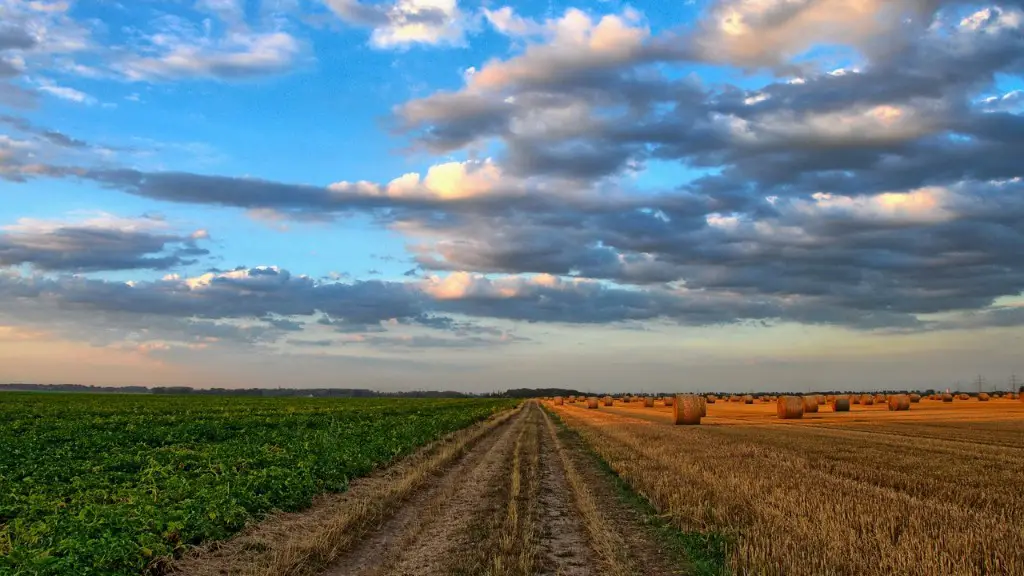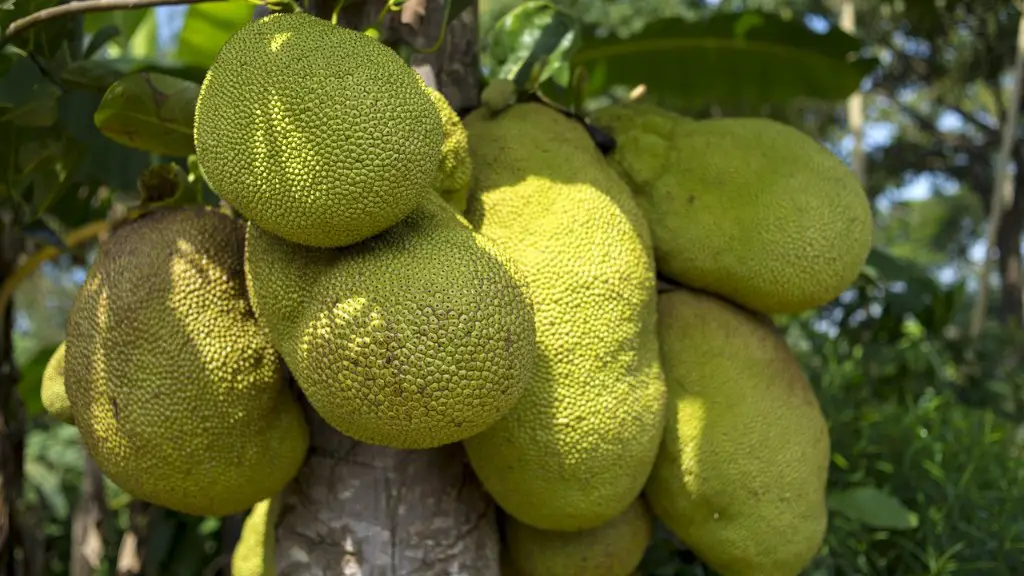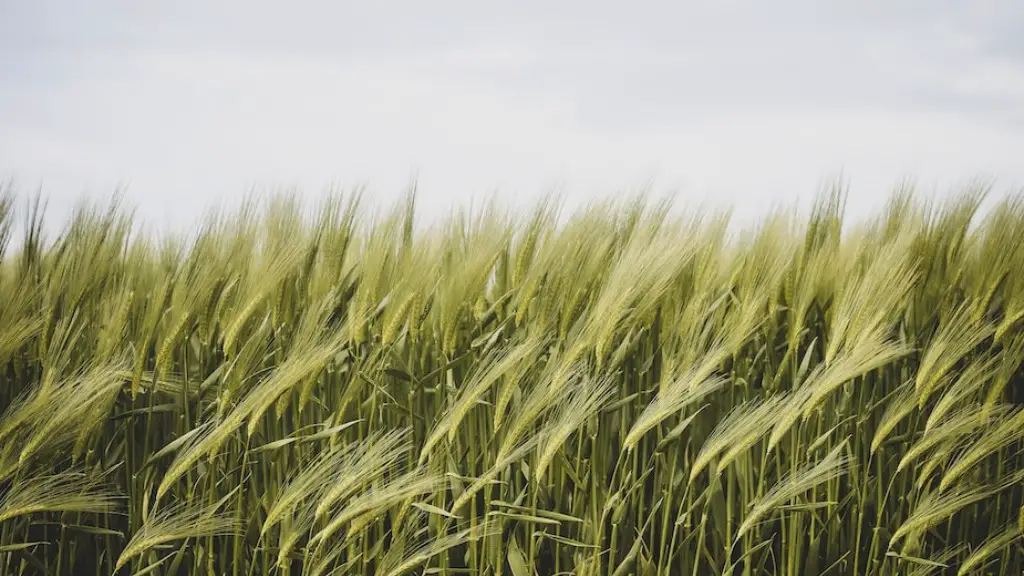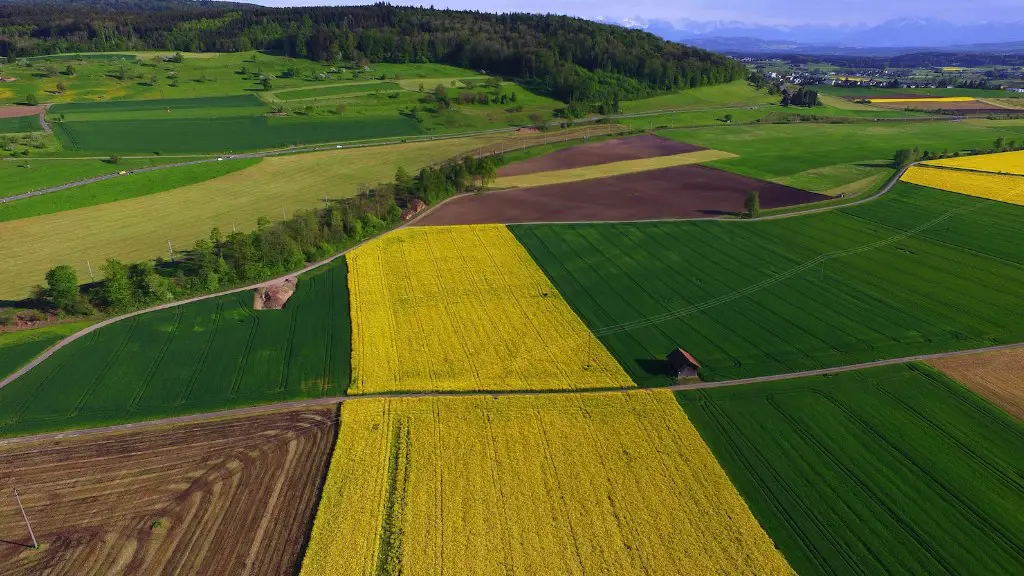Greenhouse gases like carbon dioxide and methane can be released through agricultural practices like irrigation, livestock grazing, and the use of fertilizers and pesticides. These gases are harmful to the environment and contribute to climate change.
Agriculture releases greenhouse gases in a number of ways. One way is through the burning of fossil fuels such as natural gas, oil, and coal. Burning fossil fuels releases greenhouse gases like carbon dioxide and methane into the atmosphere. Another way that agriculture releases greenhouse gases into the atmosphere is through the raising of livestock. Livestock animals like cows and pigs release methane gas into the atmosphere as they digest their food. Methane is a powerful greenhouse gas that contributes to global warming.
How does agriculture affect the greenhouse effect?
Agricultural greenhouse gas emissions come from a variety of sources, but the three dominant sources are carbon dioxide (CO2) from tropical deforestation, methane (CH4) from livestock and rice production, and nitrous oxide (N2O) from fertilizing or burning croplands. Agriculture is responsible for about half of global methane emissions, making it a significant contributor to climate change. Reducing agricultural greenhouse gas emissions will require a concerted effort to improve practices and technologies across the sector.
Agricultural greenhouse gas emissions come from a variety of sources, including livestock, fertilizer, and rice production. Livestock contribute to greenhouse gas emissions through their digestive processes, which release methane and nitrous oxide into the atmosphere. Fertilizer production and use can also release greenhouse gases, including nitrous oxide, into the atmosphere. Rice production is a significant source of methane emissions, due to the water-logged conditions that are necessary for growing the crop.
How is co2 released from agriculture
Carbon dioxide is a greenhouse gas that is released from the soil through plant decay, and from burning fossil fuels to produce heat, electricity and fuel. This gas is one of the main contributors to climate change, and its effects are being felt all over the world. In order to combat this problem, it is important to reduce our reliance on fossil fuels, and to promote sustainable practices that will help to keep carbon dioxide levels in the atmosphere under control.
Agriculture is a leading cause of deforestation and a change in land use, from natural ecosystems that take up and store carbon dioxide (CO2) from the atmosphere, to farmland. Deforestation and changes in land use can release large amounts of CO2 into the atmosphere, contributing to climate change.
How much does agriculture contribute to greenhouse gases?
Agricultural products that are not used for food, such as cotton, wool, leather, rubber, and biofuels, are not included in this estimate. However, they do provide a separate estimate which includes these non-food products. This estimates that agricultural products as a whole contribute 33% to global emissions.
Agriculture is one of the leading sources of pollution in many countries. Pesticides, fertilizers and other toxic farm chemicals can poison fresh water, marine ecosystems, air and soil. They also can remain in the environment for generations.
What is the #1 cause of greenhouse gas emissions?
The United States is the world’s second-largest emitter of greenhouse gases. The majority of these emissions come from burning fossil fuels to generate electricity, heat, and power our vehicles. Reducing our reliance on these carbon-intensive energy sources is critical to mitigating the harmful effects of climate change. Increasing our use of renewable energy, improving energy efficiency, and electrifying our transportation system are all key strategies for reducing emissions.
Methane is produced and emitted from the decomposition of livestock manure and the organic components in agro-industrial wastewater. These emissions contribute to climate change, which is a global problem.
How can we reduce greenhouse gas emissions from agriculture
Farmers can contribute to reducing GHG emissions in several ways. They can grow feedstocks used for biofuels, install wind turbines or solar panels on their land, or both. All of these actions can help to reduce the amount of GHGs emitted into the atmosphere.
Factory farming is one of the main contributors to climate change, as it releases vast quantities of greenhouse gases into the atmosphere. These gases trap heat, causing the Earth’s temperature to rise. This in turn leads to more extreme weather conditions, which can have a devastating impact on both people and wildlife.
Reducing our reliance on factory farmed products is essential if we are to slow down climate change and protect our planet.
What pollution is caused by agriculture?
The main pollutants from agriculture are sediments, nutrients, pathogens, pesticides, metals, and salts. These pollutants can have a major impact on water quality, and can be found in lakes, rivers, wetlands, estuaries, and groundwater. Animal agriculture has a particularly large impact on pollutants that enter the environment.
Farmers are constantly faced with a variety of problems that threaten their livelihoods. They must cope with climate change, soil erosion, and biodiversity loss, as well as satisfy consumers’ changing tastes and expectations. To meet rising demand for food, farmers must invest in farm productivity and adopt new technologies. They must also stay resilient against global economic factors.
What is the biggest greenhouse gas contributor to climate change
CO2, methane, and nitrous oxide are all greenhouse gases that contribute to global warming. CO2 is the most important of these, accounting for about 76 percent of total greenhouse gas emissions. Methane contributes 16 percent of greenhouse gas emissions, and nitrous oxide contributes 6 percent. Reducing emissions of all three of these gases is essential to slowing the rate of climate change.
It is no surprise that China is the biggest emitter of carbon dioxide emissions in the world. The country has a population of over 1.3 billion people and is the second largest economy in the world. In recent years, China’s economy has been growing at a rapid pace, which has led to an increase in emissions. China’s emissions account for nearly 31 percent of the global total.
The world’s top five largest polluters – China, the United States, India, Russia, and Japan – are responsible for roughly 60 percent of global carbon dioxide emissions. These countries have a combined population of roughly 4.4 billion people, which is over half of the world’s population. The top five emitters are responsible for a majority of the world’s emissions, which highlights the need for these countries to take action to reduce their emissions.
There are a number of actions that China can take to reduce its emissions. The country has pledged to peak its emissions by 2030 and achieve carbon neutrality by 2060. To meet these goals, China will need to invest in clean energy, increase energy efficiency, and decarbonize its economy.
Who is the largest emitter of greenhouse gases?
China is the largest emitter of carbon dioxide gas in the world, with 10,668 million metric tons emitted in 2020. This is significantly higher than the emissions of the second-largest emitter, the US, which had 4,713 million metric tons of total carbon dioxide emissions in 2020. India is also a major contributor to global emissions, with 2,907 million metric tons emitted in 2020. Climate change is a major global threat, and reducing emissions is critical to mitigating its effects. China, the US, and India are all major emitters of greenhouse gases and must take steps to reduce their emissions in order to protect the planet.
Livestock are a significant source of methane emissions globally. A single cow can produce up to 99 kg of methane per year, and emissions from all livestock (including cattle) make up the largest share of agricultural emissions worldwide. Methane is a powerful greenhouse gas, and reducing emissions from livestock is a key strategy for mitigating climate change.
What are the top 3 sources for methane emissions
Methane is a powerful greenhouse gas, and its emissions from human activities are a major contributor to climate change. The largest sources of methane emissions in the United States are oil and gas systems, livestock enteric fermentation, and landfills.
Methane emissions from oil and gas systems come from a variety of sources, including venting and flaring of gas during drilling and production, leaks from pipelines and storage tanks, and coal bed methane extraction. Livestock enteric fermentation is the largest source of methane emissions from agriculture, and comes from the digestion of food by cattle and other grazing animals. Landfills are another major source of methane emissions, as organic waste decomposes and emits methane gas.
There are a number of ways to reduce methane emissions, and it is important for individuals and businesses to do their part to reduce their methane footprint. Some options for reducing methane emissions include using cleaner-burning fuels, capturing methane gas from landfills and agricultural operations, and promoting methane-reducing practices in the oil and gas industry.
[1] Enteric fermentation is responsible for about 35-75% of total CH4 emissions from agriculture (FAO, 2013).
[2] Methane is produced during enteric fermentation as a result of the breakdown of organic matter by bacteria in the rumen (stomach) of cattle and other ruminant animals.
Final Words
Greenhouse gases are released into the atmosphere through a variety of agricultural activities, including livestock farming, rice cultivation, and deforestation. One of the most significant agricultural sources of greenhouse gas emissions is livestock farming, which accounted for an estimated 7.1 percent of total global greenhouse gas emissions in 2010. methane and nitrous oxide, two potent greenhouse gases, are released through livestock digestion and manure management, while carbon dioxide emissions come from the burning of fossil fuels used to power farm equipment and process animal feed. Rice cultivation is another major source of agricultural greenhouse gas emissions, specifically methane emissions from rice paddies. And finally, deforestation for agriculture purposes contributes to greenhouse gas emissions by release carbon dioxide that had been stored in trees and soil.
Agriculture is responsible for a significant release of greenhouse gases into the atmosphere. Greenhouse gases like carbon dioxide and methane trap heat in the atmosphere and contribute to the greenhouse effect, which is a major driver of climate change. Agriculture accounts for about 10 percent of all human-caused greenhouse gas emissions, making it one of the largest sources of these emissions. There are a number of ways that agriculture releases greenhouse gases, including through the burning of fossil fuels, the raising and grazing of livestock, and the growing and clearing of crops. Agricultural activities are a major contributor to climate change, and efforts to reduce greenhouse gas emissions from agriculture are critical to mitigating the effects of climate change.





